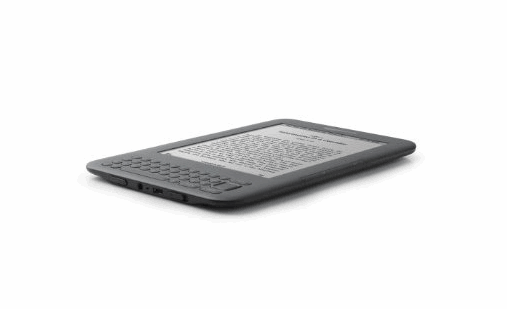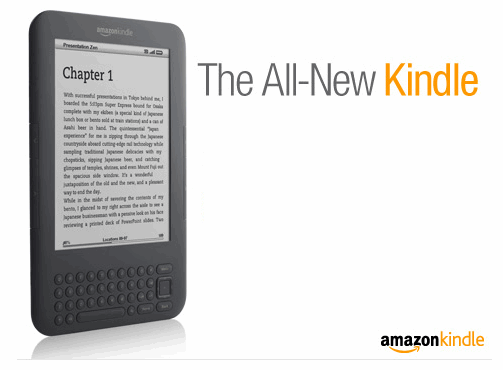 Thursday, September 23, 2010 at 10:37PM |
Thursday, September 23, 2010 at 10:37PM |  Visual Avenue
Visual Avenue 
Retail businesses have been around in varying forms for centuries. The premise behind a retail presence is simple — setup a (preferably convenient) location, allow people to visit, browse and purchase. Get more people to come in by using coupons, discounts or other incentives. However, the basic sales technique behind a retail location has been the same despite the changes and advancement in technology and media. Today, apart from using paper coupons, stores are simply using digital coupons. That is a good step forward, but very few retail stores are truly making use of technology to create a better environment for their customers.
For those in the retail business, here are some ideas:
- Digital Displays: Retail locations have limited space and therefore clothing stores only use a handful of mannequins to display their best (and often times, most expensive) products. Furthermore, every person is different physically. So, why should a potential customer purchase an item just by looking at a mannequin that doesn’t resemble their physical characteristics and/or taste. A solution for this to have tablet-like interactive displays that allow users to visually select and modify their body type as well as different types of apparel. Combining these together would result in a display that is far more personal and appealing to the end user.
- Email Receipts: Few companies have started doing over the past couple of years. However, why can’t more companies simply email you receipts from your store purchases? With the amount of paper and junk mail, it’s easier to categorize and archive emails than it is to locate a flimsy receipt.
- Convenience: Ever walk into a store only to find out that the product is out-of-stock? Retail stores could avoid (a lot of) frustrated customers by having them order a product from a store’s digital display and having it delivered for free. A few bookstores have implemented this practice, but a wider adoption would be beneficial.
The possibilities for engaging customers via digital media in a retail location are significant. However, very few companies try these techniques because of the investment required. While that’s understandable, these investments are going to get larger in size as time progresses.

I sold my Kindle 2 a while ago to purchase the iPad. I immediately regretted that decision as the Kindle 2 was most certainly the best e-reading device I had come across. While the iPad is a great product, it cannot be used for long term reading. The reflections and the weight of the product make it difficult to use for extended periods of time.
A few months ago, Amazon announced that they’d be releasing the Kindle 3 in two flavors — a WiFi version and a WiFi + 3G version. Starting at $139, I ordered the WiFi version as soon as it was available. Having used it intensively over the past 2 weeks (including an international trip to Australia), here are a few comments regarding the device:
- Size: I’m not sure how Amazon managed to pull this off, but the Kindle 3 has the exact same screen as its predecessor, but the overall device is much smaller.
- Speed: The page turns are much faster than prior versions. Often times, you aren’t even aware of the time delay between the pages.
- Battery: I’ve only charged my Kindle once and after reading one book and using it almost daily for 2 weeks, there’s still more than 70% of the battery left.
- Case: The Kindle 3 does not come with a case. I highly suggest picking up the case with a built in light. The light borrows power from the charged Kindle, but has very little overall impact.
- Contrast: This is one of the biggest improvements with the Kindle 3 and the difference is apparent. The screen savers and the text is a lot sharper and crisper, delivering a better reading experience.
Compared to the iPad:
The Kindle 3 and the Apple iPad are in completely different categories. One is a book reader. The other is a computer. However, for reading books, the Kindle 3 is far superior. Furthermore, Amazon makes it easy to access the Kindle content across multiple devices via their iOS, BlackBerry and Android applications.

Consumers have various options when it comes to purchasing digital media. They can purchase content from iTunes, from the Zune Store or from Amazon.com. All of these options give users the ability to purchase video and audio at similar prices. However, Apple and Microsoft limit their content to their own devices, making it difficult for consumers to try other products. Apple has done this well and has done it for many years. They’ve created an ecosystem that works together. It’s simple to use and it scales effectively. You can purchase a movie from iTunes, view it on your iPod/iPhone and stream it to your TV via Apple TV.
On the other hand, Amazon has a completely different approach — they allow content purchased from their store to be distributed on many supported platforms. However, the experience is not easy or pleasant for casual consumers.
In order for digital media to succeed, content should be compatible with most advanced hardware platforms, regardless of the store it was purchased in. Online video has a long way to go and it is getting challenging to find content that works with certain hardware lock ins.

Reader Comments